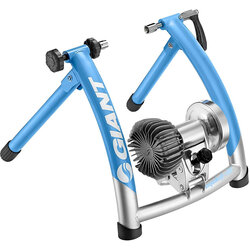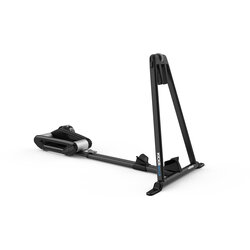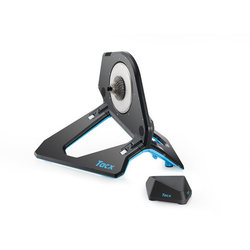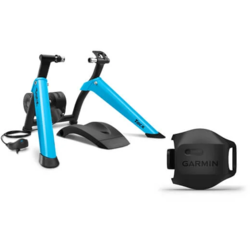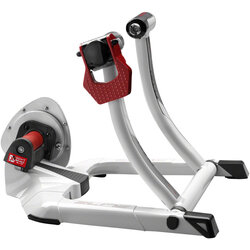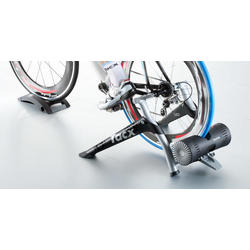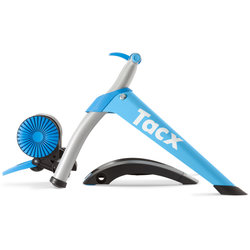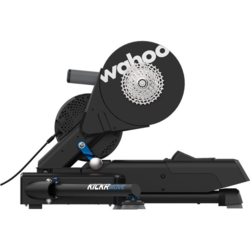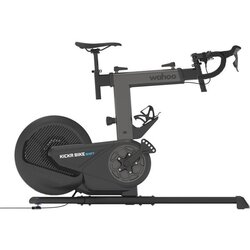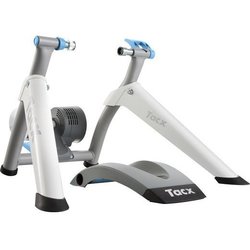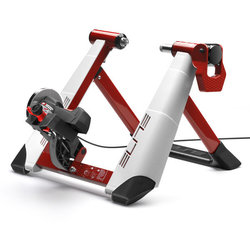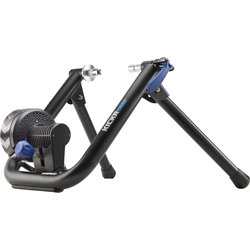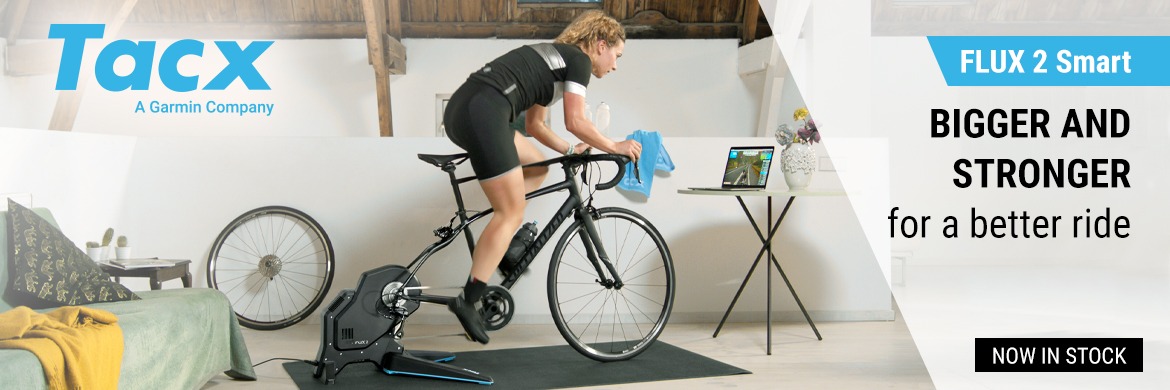
Winter Riding: Your Guide to Training with a Trainer
Trainer season has arrived! With winter weather around the corner, and rain becoming more common, many of us are whipping out our trainers and working out what our winter workouts will look like this year - and whether it’s time to upgrade to a smart trainer. In this post, we’ll outline the pros and cons of the different types of bike trainers so you can train the way that works best for you.

Wheel-on trainers
Wheel-on trainers are a category of trainers that hook up to your bike via the rear axle. This means you leave your rear wheel on the bike (hence the name!). There are several different types of wheel-on trainers, including fluid, wind, and magnetic trainers. These each rely on the forces caused by fluid, wind or magnets to increase or decrease resistance while you ride.
To get started with a wheel-on trainer, you’ll need:
The trainer.
A trainer axle or quick release.
Trainer tire.
A front wheel support.
If you want your wheel-on trainer to measure your performance, you’ll also need a cadence sensor that links to your bike computer/smart watch. The Strava app won’t be able to measure your distance or speed on the wheel-on trainer.
Wheel-on trainers tend to be easier to pack up and put away if you're tight on space.
Watch our YouTube Guide to setting up a wheel-on trainer here.
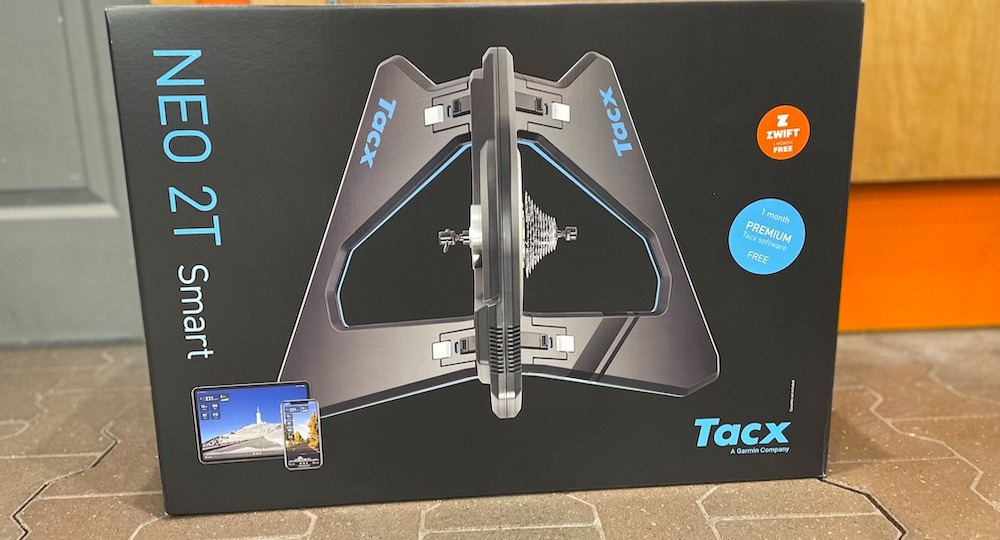
Direct-Drive Trainers
To use a direct-drive trainer, you remove your rear-wheel and attach your bike and cassette to the trainer. So, the direct-drive trainer essentially takes the place of your rear wheel. This means it’s possible to put a mountain bike on a direct-drive trainer (something you can’t easily do with a wheel-on trainer).
To get started with a direct-drive trainer, you’ll need:
The trainer.
A Smart phone, TV or Computer, or compatible Bike Computer (if using a training app).
A sweat strap - not necessary, but certainly doesn’t hurt.
The vast majority of these trainers are also smart trainers (more on that below), which means they are capable of adjusting the resistance for you when connected to an app. They will typically measure your distance, speed, cadence, heart rate (if you have a compatible heart rate monitor), power and more, which can help you train more intelligently, too!
Other benefits of direct-drive trainers is that they tend to have a heavier flywheel, which means they have a more realistic feel than wheel-on trainers. They are whisper quiet (in comparison), measure your metrics more accurately, and have a lot of the sensors you’d want (like cadence sensors and power meters) built into them.
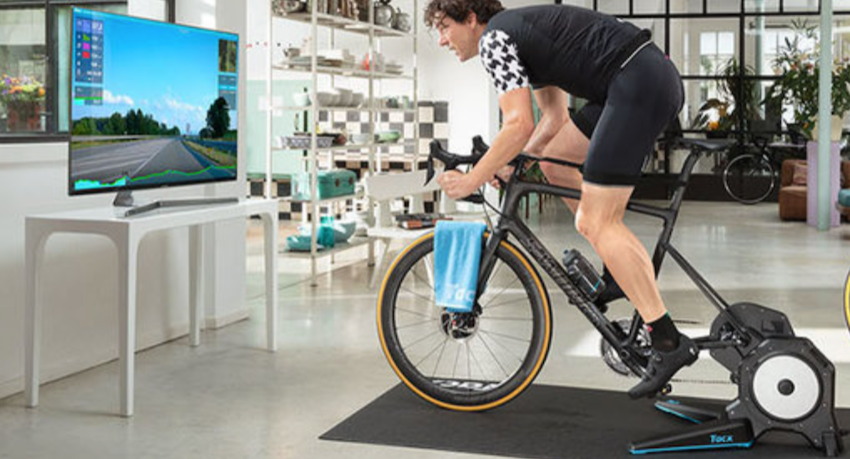
Smart Trainers
More and more trainers are coming out with smart capabilities, but not all smart trainers are created equally. Some smart trainers can adjust the resistance for you in line with whichever app you’re using for your virtual ride - but this functionality only comes with direct-drive trainers.
Wheel-on smart trainers are ‘smart’ in the limited sense that they can be used with an app, but it will be a much more manual process to adjust your resistance to the terrain in the ride.
There are a limited number of smart trainers that won’t link with Zwift or other certain apps. All the trainers we sell have this functionality, but double check before you buy anything second hand!
How Do You Choose The Right Trainer?
Simple! Ask our team. We’ll work with you to make sure you and your bike get set up with the trainer and accessories you need to stay fit as the temps drop!
Zwift - and Other Virtual Training Apps
There are more and more virtual training apps emerging every year, but Zwift is undoubtedly the biggest. The exact features vary app-by-app, but they all essentially seek to replicate the ‘outdoor cycling experience’ indoors - including the community aspect.
You can follow well known routes with real or ‘cartoonified’ scenery generated to keep things interesting. When used with a smart trainer, most virtual training apps will adjust the resistance to make it ‘feel real’. You’ll have to pedal harder to make it up hills, take a break while you cruise downhill, and get out of your seat and go to challenge someone else you see on the course to a sprint. Just like in the real world, you’ll occasionally be passed by riders who are faster than you, you’ll pass riders who are slower than you, and you can connect with riders around the same pace.
In the case of Zwift, it’s part video game part training. In terms of the ‘video game’ aspect, you collect points as you ride through the virtual world. As you gain more points, you gain experience points and go up levels. As you unlock more levels, you can upgrade your bike, gear and components and unlock more roads.
In terms of Zwift being a training program, you can access training courses for any level of cyclist - beginner through advanced - to ensure you enter the spring cycling season ready to ride whatever you want to do. This part of the program is really well designed. If you skip a training session (because life got in the way), it automatically adjusts the upcoming activities.
For riders who are more competitive, there are segments, race courses, training stats (like FTP), and group rides.
You get one month of free Zwift with many of the Tacx Trainers we sell. Some come with a free month of Tacx Premium software too, which has a range of premium training features.

